Beyond Lotus effect: Taro leaf provides clues to design large hysteresis superhydrophobic surfaces
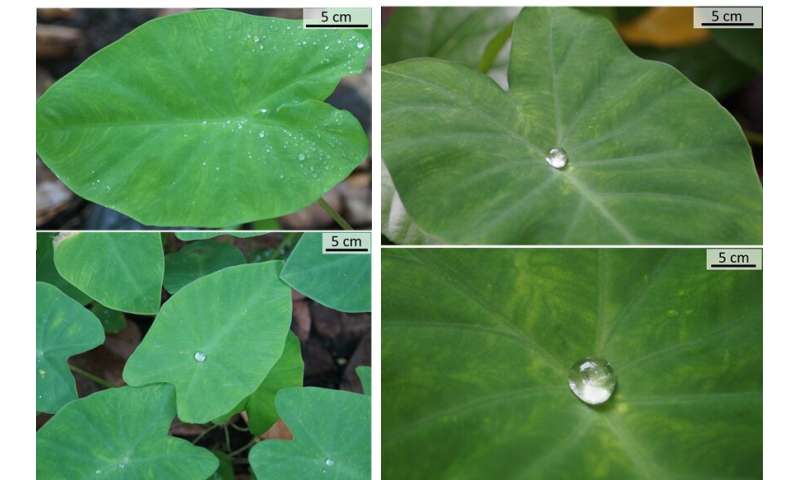
Ever since the discovery of the lotus effect in the early 1970s, researchers have designed and tested superhydrophobic surfaces with potential applications in self-cleaning, low-drag, anti-icing, and anti-fouling surfaces. These surfaces are based on micropillar-like structures found on the lotus (Nelumbo nucifera) leaf. Another leaf that shows excellent superhydrophobic characteristic, taro leaf (Colocasia esculenta), has not been as heavily researched to date.
Superhydrophobic characteristics of taro leaf
We investigated wetting and water repellency characteristics of the leaf of the taro plant, native to the tropics and sub-tropics. Scanning electron microscopic images of the leaf surface reveal two-tier honeycomb-like microstructures, as compared to the previously reported two-tier micropillars on a Nelumbo nucifera (lotus) leaf. The measured static contact angle on the leaf is around 150 degrees, around 10% less than the lotus leaf. The measured contact angle hysteresis was around 9 degrees. We recorded the droplet impact dynamics using a high-speed camera, and beyond a critical impact velocity (> 0.1 m/s), the droplet bounces on the leaf, exhibiting remarkable water-repellency characteristics.
Designing bioinspired surfaces
Based on the morphology of the leaf surface, we manufactured bioinspired surfaces with hexagonal cavities of different sizes, using standard photolithography techniques. We varied the ratio of inner to the outer radius of the circumscribed circle to the hexagon. We found that the measured static contact angle on the bioinspired surface varies with the ratio, and this variation is consistent with a free-energy-based model for a droplet in Cassie-Baxter state.
The static contact angle on the bioinspired surface is closer to that for the leaf for if the ratio is around 0.97. However, the contact angle hysteresis is much larger on these surfaces as compared to that on the leaf, and the droplet sticks to the bioinspired surfaces after the impact. We explain this behavior using a first-order model based on the force balance on the contact line. At larger impact velocities, we recorded droplet breakup on the surface with the larger ratio, and the droplet assumed a full or partial Wenzel state. The breakup is found to be a function of impact velocity and the ratio, and the measured angles in full Wenzel state are closer to the predictions of the free-energy-based model. The sticky bioinspired surfaces are potentially useful in applications such as water harvesting.
-
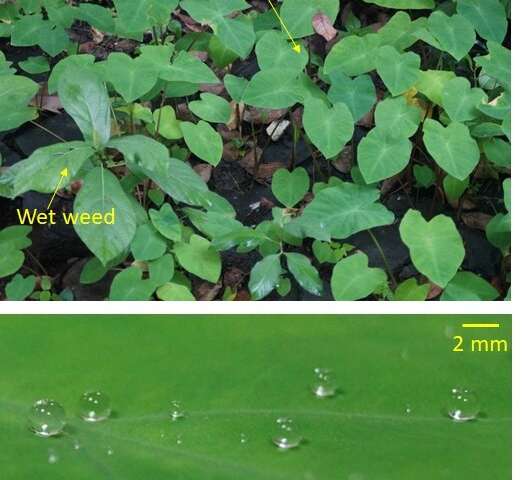
A photograph of Taro plants in garden of our campus. Some leaves of an other plant (bottom left corner) can be seen as wet as compared to the leaves of the taro. The bottom row shows deionized microliter water droplets on the leaf. Credit: CC-BY-public domain -
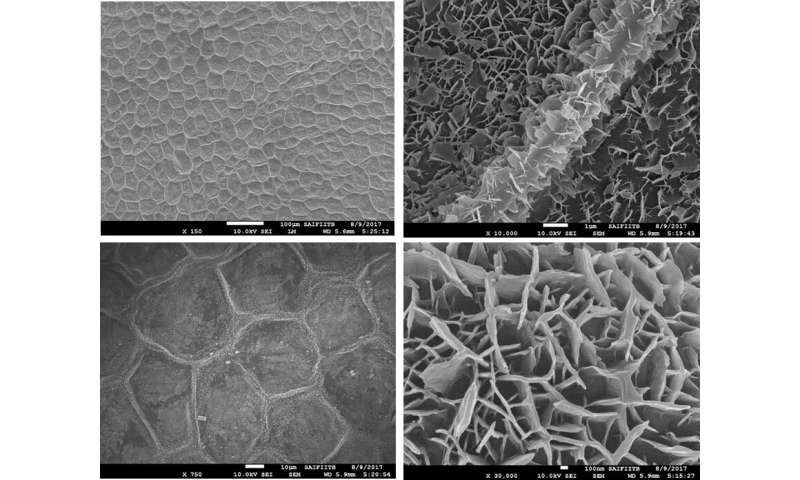
SEM image of the surface of the taro leaf. Zoomed-in view of the SEM image with systematic increase in magnification (Top left) 150X (Top right) 750X (Bottom left) 10000X (Bottom right) 30000X. Credit: CC-BY-public domain -
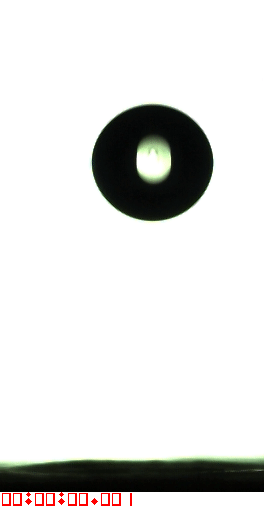
Impact dynamics of a microliter water droplet on the taro leaf with an impact velocity of 0.82 m/s. The droplet diameter is 1.6 mm before the impact. The counter on the movie is time in milliseconds. Credit: CC-BY-public domain -
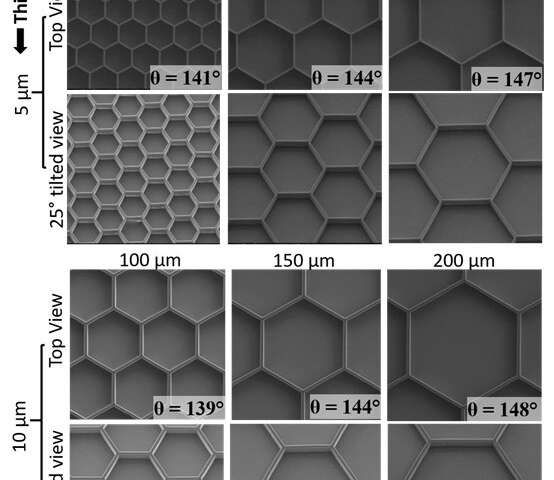
SEM images of the bioinspired surface taken from top and 25 degree tilt. The first and third row show the surfaces manufactured with different lengths of the side of the hexagonal cavity with 5 and 10 micrometer thickness of the wall of the cavity, respectively. The length of the side is shown on the top of each frame in first and third rows. Credit: CC-BY-public domain
This story is part of Science X Dialog, where researchers can report findings from their published research articles. Visit this page for information about ScienceX Dialog and how to participate.
More information:
Manish Kumar et al. Wetting characteristics of Colocasia esculenta (Taro) leaf and a bioinspired surface thereof, Scientific Reports (2020). DOI: 10.1038/s41598-020-57410-2
Bio:
Mr. Manish Kumar is a Ph.D. student in Mechanical Engineering Department at IIT Bombay, Mumbai, India. Dr. Rajneesh Bhardwaj is an Associate Professor in the same department. His research interests are in droplets, interfacial flows and fluid-structure interaction. Our research group page is:
sites.google.com/view/interfaces-fsi-lab